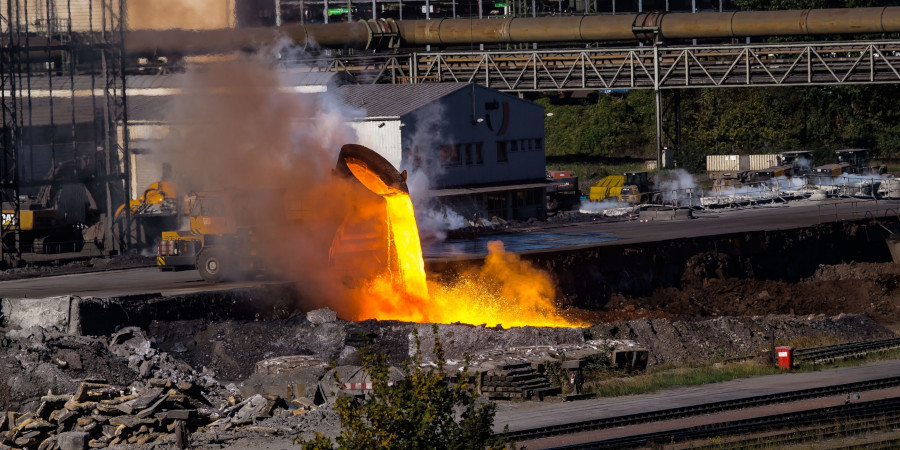-

Inspiration
Steelworks slag as a binder for construction materials
In the project SABINE, MC and research institutions are looking for ways to utilise steelworks slag as a binding agent for construction materials.
Steelworks slag as a binder for construction materials
Feb 03, 2022
For a long time MC has been engaged in research and development in relation to climate-compatible construction materials. This has resulted in a broad range of innovative products, such as cement-free annular gap grouting mortar or cement-free EFC concrete. MC, research institutions and other companies are involved in the SABINE research project looking into the utilisation of steelworks slag as a binding agent for geotechnical construction materials.
Resource-efficient circular economy
Keen to drive a more resource-efficient circular economy, the partners participating in “SABINE” are pursuing the goal of using secondary raw materials such as slag or ash – produced in other industries as mineral by-products – for the formulation of construction materials. The purpose is both to reduce the proportion of cement in building materials – and thus their carbon footprint – and to make sensible use of by-products in meeting the increasing demand for mineral raw materials in the construction industry. Alternative binders in which cement is partially or completely replaced – by slags, for example – are therefore becoming more and more important, as their carbon footprint is significantly smaller.
Useful by-products
Slags are produced as a by-product in the production of metals – examples include blast-furnace slag created during the production of pig iron or electric furnace slag which arises in scrap-based steel production. These slags differ enormously in both their chemical and mineralogical properties. Blast-furnace slag, which is quenched with water and therefore solidifies as a glassy (vitreous) granular product, has already been used in cements for 140 years due to its latent hydraulic reaction. Crystalline steelworks slags, on the other hand, do not usually have this property and have mainly been used as aggregate in road and railway construction so far. The purpose of the SABINE project is to investigate how steelworks slags can be treated, processed and activated in order to enable their use as an alternative binder in construction materials.
Geotechnical applications The basic effect of alkaline-activated binders in the form of slag, ash or even rock dust has been known for over 100 years. Depending on the type of substance, cross-linked silicate structures form, i.e. inorganic long-chain molecules known as geopolymers or the calcium silicate hydrates typical to cement hardening. Concretes with alkali-activated binders are already being used as sustainable building materials in isolated cases. With their lime and silicate fractions, steelworks slags also have the potential to be alkali-activated. However, previous research has shown that these are not as easy to activate as vitreous blast-furnace slag. Specifically, it has not been possible to achieve comparable strength values yet, thus so far precluding their use in concretes. However, there is a number of geotechnical applications where even lower strengths are sufficient, such as annular gap grouting compounds for mechanised tunnel boring, liquid soils for backfilling pipeline trenches and diaphragm wall compounds for underground retention and sealing structures. These construction materials form the focus of the SABINE project. Given that they are in contact with acidic or sulphate-containing groundwater, for example, their durability is also of critical importance. And here, alkali-activated binders have already been seen to sometimes even surpass the quality of cement-based building materials.
About SABINE
The partners in the SABINE joint project are "Studiengesellschaft für Tunnel und Verkehrsanlagen e. V." (STUVA), "Institut für Baustoff-Forschung" (FehS), "PORR GmbH & Co. KGaA", "Georgsmarienhütte Holding GmbH" and MC-Bauchemie. The project is funded by the Federal Ministry of Education and Research (BMBF) as part of the initiative “Resource-Efficient Circular Economy – Construction and Mineral Material Cycles (ReMin)” as part of the framework programme “Research for Sustainable Development - FONA3” from 2021 to 2024.

© SABINE/AdobeStock_thomasknospe (2021)
-
News
Click here to go to our News section.
-
MC-Pedia
In our MC-Pedia you will find technical articles on various topics written exclusively by our specialists.
-
Magazine
Get our latest issues of our customer and employee magazine MC aktiv.
-
Downloads
Find all relevant datasheets of our products as well as brochures of our company, Fields of Expertise and product categories here.
-
References
Click here to get to our library with reference projects for all types of application.
-
Careers
Click here to go to MC Career.
-
Contact
Click here to go to our Contact section.
